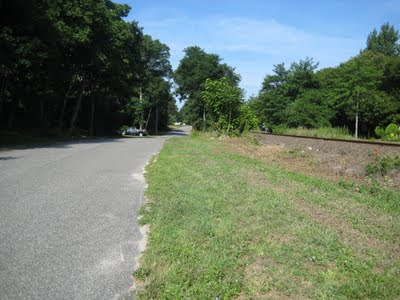Many factors influence a fossil’s hues and tones, including the mineral composition of the sediment within which the fossil-to-be is buried, the amount of organic material, bacteria, and oxygen in the surrounding matrix, the temperatures and amount of pressure applied during its millions of years of sequestration, and what it experiences upon exposure. Curiously, the basic texts on fossils I consulted say little about this coloring process and, when they do, it is usually in the context of the permineralization of wood or perhaps bone, a process in which dissolved minerals in the surrounding matrix leach into the remains, filling empty spaces. Different mixtures of minerals, different colors.
Paleontologist Bretton Kent (Fossil Sharks of the Chesapeake Bay Region, 1994) describes the origins of fossil colors:
Internal cavities and the microscopic spaces left in fossils by the destruction of organic materials can be eventually refilled by the precipitation of inorganic compounds, such as calcium carbonate, iron oxide and iron phosphate. These minerals help stabilize the fossil, but also alter the color from the white of fresh bone, cartilage or teeth to the various earthy shades typically found in vertebrate fossils. (p. 124)The basic composition of shark teeth as described by Kent – roots composed of osteodentine and crowns composed of enameloid – offers the fossilization process two different canvases to work with, leading usually to at least a bicolor fossil. Circumstances may offer the tooth a fuller palette. The crown appears more susceptible to becoming multi-hued. Here, then, is a sample of my colorful Makos. Several species are represented here and the largest of the bunch are about 1 3/8th inches in length.
What makes this process all the more fascinating is how random the painting might be. Fossils from the same species and from the same formation, perhaps even from within inches of each other, may emerge into daylight presenting different “faces” to the world. Though their coloring differs, the story each has to tell of the species from which it came will be the same. Their taphonomic (post-death) experiences . . . now those will differ.
In the picture below I’ve now identified the various formations from which these teeth came. Each is from the Miocene (most are from around the 20 million year mark within that epoch which stretched from 23 million to 5 million years ago) with the exception of the tooth probably from the Yorktown Formation which is Early Pliocene (some 5 million years ago). The two numbered teeth were found on the same day in just about the same location. Of course, neither of these pieces of information has probative value for this story because they were found in the wash between the Chesapeake Bay and the Calvert Cliffs. As a consequence, though these two teeth could have been initially exposed at the exact same time, they could just as well have emerged weeks, months, or even years apart. Similarly, they may have fossilized in the Calvert Formation in almost the same, precise location but could have spent millions of years in spots several miles apart. Still the circumstances of these finds serves, in my mind at least, to burnish the remarkable differences in coloring between these two teeth.
Simply because I’ve been reading it and there’s a little, related, quirky element to it, these musings on colors now involve Jay Hosler’s original and admittedly peculiar graphic story titled The Sandwalk Adventures: An Adventure in Evolution Told in Five Chapters (2003). The book explains the basic principles of evolution through drawings depicting a conversation between an old Charles Darwin and a follicle mite living in his left eyebrow (and this isn’t even the quirky quality I mentioned).
With the exception of the covers, the drawings in this book are intended to be wholly in black and white. But my copy has a very small handful of drawings in the opening pages that are nicely colored. Where there was intended to be a boring and limited palette, my book enjoys in little pockets a vibrant kaleidoscope of Crayola colors, colors that undoubtedly originated courtesy of some previous owner or, more likely, his or her child. (Ah, the joys of buying used books on Amazon.) Here's an example from the front matter featuring a wonderful quotation.
(I grew to like this book even with its mites; the genial Darwin who graces its pages helps. Further, there is sound science here, particularly in the annotations to the drawings. There . . . I think that’s enough of a “review” to stay within copyright law and excuse my inclusion of the picture above in this posting.)
Fossil-like, my copy of The Sandwalk Adventures reflects its idiosyncratic history in its colors, though it tells the same story as its uncolored kin.
















